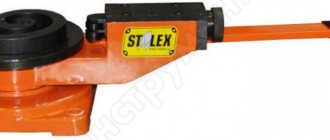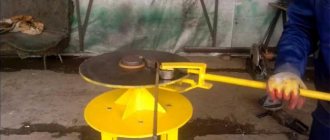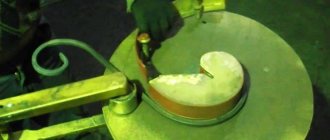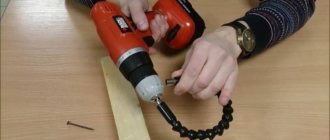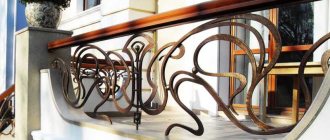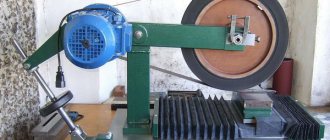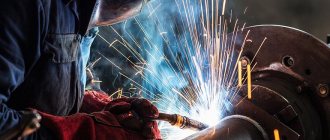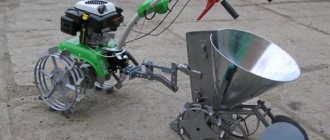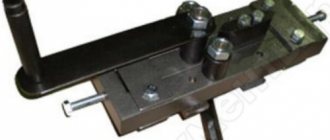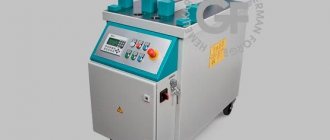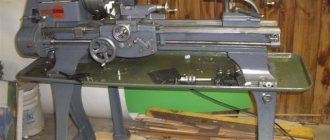Bending a square on a bend. Photo Firm Utica
Cold forging technology ensures the formation of workpieces by plastic deformation without heating. To perform technological operations, specialized equipment and accessories are used. In cold forging, without their presence, it is impossible to perform a single action to change the shape of the workpiece. Features of cold forging equipment are discussed in this section. Below you can also see links to site materials on different types and models of this equipment.
Manual drive or electric?
The electric drive can be installed on any machine. Another question is – is it necessary? Again, the decision depends on your plans. The electric drive will allow you to save your own energy. But this is not its main advantage. The torque with electric force will be more uniform, and this will lead to smooth and uniform forging elements.
Drawing of a cold forging machine.
The number one contender for an electric drive is a torsion bar machine, where it is extremely difficult to maintain uniformity of screw twisting by hand. It's also very easy to do. You will need a drive axle axle shaft of an old car, a differential gear pair, and a protective sleeve. The power of a homemade engine should not be high - no more than three kW and no higher than 900 rpm.
As for the electrification of the remaining machines, decide for yourself. If you plan to do cold forging for your own needs, you are unlikely to need electric traction.
We wish you strong snails, high-quality rods and true connoisseurs of your blacksmithing art.
Manufacturing nuances
Despite the fact that many machines designed for cold forging are relatively simple to construct, before creating them, it is recommended that you familiarize yourself with the information and all the nuances of manufacturing. This must be done to ensure that no unforeseen circumstances arise during the assembly process that could negatively affect the quality of the product.
Before proceeding directly to the design of a cold forging machine, it is necessary to draw up a drawing in which all the features of the future device will be defined in the smallest detail. After the diagram is ready, you need to purchase and prepare all the necessary parts. Only after this can you begin assembly.
Before manufacturing the machine, you need to prepare the bed so that all the parts for construction are at hand. All parameters must be accurately calculated so that the devices do not interfere with each other. For the manufacture of the frame, experts recommend using only durable material.
Pros and cons of “gentle” processing
The popularity of cold forging technology is explained by several significant advantages of this work.
The advantages include:
- reduction in the cost of processing, because there is no need to build a furnace or purchase expensive equipment for heating;
- ease of giving the structure a marketable appearance: finished elements do not require further processing due to the absence of soot;
- obtaining identical blanks: it is possible to fit them as accurately as possible to the template;
- increased strength of “cold” metal structures.
Of the minuses it should be noted:
- applying maximum effort, since the material bends harder during cold pressing;
- the need for powerful machines that ensure efficient pressure on the metal;
- inability to process very durable sheet material (blanks);
- Mandatory surface cleaning before cold forging.
Creating a real forge with a large forge is too long, troublesome and expensive, so the cold alternative has a great advantage even in this regard. The disadvantages, on the contrary, can hardly be called serious.
Machine design
Without exception, all devices intended for cold forging have certain features and parameters. In order to start doing this not only exciting, but also profitable business, you need to have an idea of what each machine is used for. The craftsmen use the following types of equipment in their work:
- Bending machines. Serve to change the size of bends and waves. This machine can bend rods with a diameter of up to 16 millimeters.
- Twister is a unit equipped with a specialized template, onto which the metal being processed is pressed directly. At the same time, the pressure on him must be very great, since the efficiency of his work directly depends on this.
- The base with spacers is designed to perform patterns of absolutely any variation. Such mechanisms have a very simple design.
Do-it-yourself “Snail” forging machine
according to drawings and technology
Before making any devices, hand tools or machines for artistic forging, it is necessary to complete graphic images, templates, sketches, and drawings of the future device.
To make markings more accurately, it is best to use graph paper. Draw a spiral on it, the radius of its turns gradually increasing. The same pitch must be observed between turns. It must be said that this condition must be observed only in cases where symmetry of patterns is required; as a rule, no more than 4 pieces are made.
Also take into account what kind of workpieces you need to work with. The distance between the turns must be made so that it is slightly larger than the diameter of the metal rods, otherwise it will be difficult to remove the finished product from the machine.
To create a full-fledged work process, it is necessary to securely fix one end of the product. Here you will need a piece of rod that is equal to the width of the strips. To fix the working platform you will need a workbench. Often a piece of thick-walled pipe is used as a stand. The main thing is to ensure maximum fixation, since during cold forging the forces applied are quite large.
https://youtube.com/watch?v=rUTdr5Cb9SE
Machine assembly
Along the length of the structure, small pieces of rods can be welded at a distance of 5-6 cm; special holes must be made for them in the working area. Do not forget to carefully secure the ends of the products that you will bend.
Cold forging is especially popular among beginners in blacksmithing. To manufacture products using this method, you do not need a well-equipped workshop (you can get by with a garage or shed), nor much experience, nor do you need special knowledge about the behavior of metals. As for devices, all the necessary machines and tools can be made with your own hands at home.
Step-by-step technological process for making a reverse curl on the “Snail” machine
The rolling rollers perform sequential crimping of the pipe. Protruding ribs are formed, and the weld remains inside the layer, offset to the center.
The pipe ends are compressed on parallel eccentric rollers. It becomes like a stripe. In this form it is easier to fix it on the machine.
The shank is formed in a special device. Now the workpieces will be fixed on the machine in one movement.
The workpiece is fixed in the center. There is a groove that secures the shank. It can be seen that the spiral has a uniform descent in height.
After fixing the shank, the electric motor is turned on. Forming of the part begins.
The loop is formed when the workpiece touches a special support element. It is more often called the support shaft. To reduce the force, it is equipped with a bearing. The part rotates freely around the support.
Part of the spiral is formed. But if it is necessary to process for a longer length, a removable element will be installed.
A blank is also formed from the other end. Here the master determines in which direction to bend the part.
To continue work, a removable element of the “Snail” assembly is installed.
Now you can form the bend of large parts.
Even long workpieces are easily bent to specified dimensions. Marks are made on the work items. They are used to guide how much to bend.
On the reverse side, additional bending of the part is performed.
The product is being finalized on both sides.
The finished part has a finished appearance. If necessary, the shanks will be sawed off. Then no one will guess how the workpieces were fixed.
If you need to make a small part, then use another “Snail”. Experienced craftsmen have several of them.
How to build a curl?
There are plenty of sketches of curls for artistic forging on the Internet, but when you try to adjust their sizes to those required for yourself, it often turns out that the product loses spectacularly due to a seemingly insignificant violation of the proportions. Therefore, it is also desirable to be able to construct forging patterns of curls that obviously have aesthetic advantages.
Templates for cold forging of artistic curls - volutes - are built on the basis of mathematical spirals. The most commonly used is the logarithmic spiral; it is one of the widespread natural forms expressing the fundamental laws of nature. The logarithmic spiral is found in the shell of a snail, in our hearing aids, and in the form of a treble clef in musical notation; in the neck of the violin itself too.
Construction of forming templates for cold forging based on spirals
The principle of constructing a logarithmic spiral by points is that when the radius that forms it is rotated, starting from a certain initial R0, by a fixed angle φ, its length is multiplied by the divergence index of the spiral p. For volutes p, as a rule, take no more than 1.2, because a logarithmic spiral diverges (unwinds) very quickly; on pos. In Fig. a logarithmic spiral with p = 1.25 is shown as an example. To make it easier to build a spiral at points with sufficient accuracy for forging work, take φ = 45 degrees.
In the case when a denser arithmetic spiral is required, when the radius forming it is rotated by the same 45 degrees, 1/8 of the spiral pitch S is added to the previous radius, pos. B. In both cases, R0 is taken equal to or greater than the diameter d of a workpiece of uniform cross-section, pos. A. If the initial end of the workpiece is pointed, R0 may be less than d, up to the plasticity limit of the metal.
It remains to decide how to lay a visually harmonious spiral with a given opening size a. To solve this problem analytically, i.e. using formulas with any precision specified in advance, you will have to solve cubic and higher-order equations. There are no computer programs for numerical technical calculation of volutes on the Internet, so we will use an approximate method that allows us to get by with one working and, possibly, one test graphical construction. It is based on the assumption that for small p the sums R2+R6 and R4+R8 do not differ much. The step-by-step algorithm for constructing a volute for a forging template follows from here:
- Based on the available material, we determine R0;
- we take the number of turns of the volute w according to the principle: as God puts it on the soul of the left hind paw of a beloved cat;
- Using the data from the table in Fig., we calculate the diameter of the volute b such that it is slightly smaller than the width of the opening under it a, see pos. G;
- We calculate the working initial radius R using the formula for pos. G;
- we build a volute profile on a scale point by point;
- if necessary, we accurately adjust R using the same formula and build the profile of the working template completely.
Types of equipment for manual cold forging of metal
To process metal products and create forged elements, special forging equipment is required. Enterprises produce a variety of mechanisms that facilitate human labor, speed up production and allow achieving high quality finished items. There are various machines for hand cold forging on sale. Before you learn how to make a homemade machine, you need to familiarize yourself with the mechanisms for arranging a blacksmith's workshop.
Snail machine
It is considered a universal device, which is intended for the manufacture of spiral-shaped products. Experienced blacksmiths claim that this is one of the simplest devices. The snail with a collar is made from a cast base on which a movable twisted conductor is fixed. Using the gate, the blacksmith begins to move the mechanism, and the workpiece is twisted in a spiral. Both cold and heated metal profiles and rods can be used as consumable raw materials.
Torsion bar machine
This device allows you to twist several steel rods into one common piece. The design consists of a cylindrical base on which two twisting elements are fixed. The twisting parts are also clamps in which the workpieces are secured. Additionally, an electric motor can be installed that twists the rods to the required twist shape.
Gnitik machine
This is a classic manual cold forging machine. With its help, blacksmiths make any angle on workpieces. The design of the bend is a bending die with an eccentric drive. Additionally, they come with a template with metal rollers that are fixed on the frame. Various parts can be installed on the flex to expand its functionality.
Gnutik machine (Photo: Instagram / stanmann_ru)
Press machine
Many people who have worked in car repair shops or locksmith shops are familiar with presses. This cold forging mechanism can be assembled by hand. The machine consists of a cast frame and a piston mounted above it. An electric motor or gas drives a piston, which moves towards the working surface. The press is used to “bend” certain workpieces to certain angles.
Wave machine
With this device, blacksmiths create repeating twisted patterns (swirls with a small core). The design consists of two cast disks. They are secured to a metal base with bolts. In an improved version of the wave, it is possible to adjust the distance between the cast discs.
Let's sum it up
Before you start creating artistic metal products, you need to make sure that you have all the tools and equipment for cold forging. All work must be carried out carefully and carefully. Only in this case can you achieve an ideal result.
In most cases, it is much more profitable to make cold forging machines with your own hands. These devices play an important role and are necessary for the production of quality products. This is explained by the fact that not every element can be processed using manual tools, and the cost of most machines is quite high, even when it comes to the most basic units.
Many craftsmen prefer to make their own machines, which help them make quite original products. In this case, everything largely depends on the experience of the master and his desire. If you decide to construct a machine with your own hands, it is important to perform all actions in a certain sequence, then the result will exceed all expectations.
Other equipment: universal, templates, patterns, etc.
Cold forging fixtures are used for arc bending, angling or twisting. Below are the main types of equipment.
The machines also include:
- Stamp press. Using this device, a certain pattern is applied to metal by printing it from templates under pressure.
- Mechanical unit. A device that helps bend a rod into a circle shape with different diameters.
- Forging devices, which include templates, mandrels, and jigs, are used by individual craftsmen who are not chasing the number of elements produced.
- Hand tools: pliers, forks, heavy hammer or sledgehammer are also more often used by individual craftsmen.
For your information! Templates, jigs and patterns for cold forging can be varied; each master makes them independently to obtain an exclusive form of the material. The most common types are listed above; you can make them yourself at home.
Marking and installation of “attached” equipment
Perhaps the most creative stage of work. You can do everything with your own hands. But how, taking into account the future or limiting ourselves to the production of similar samples?
Option 1. The simplest. The meaning of the operation is that the outline of a spiral is drawn on the tabletop.
Essentially, this is a sketch of future shaped parts, for example, from a rod. After this, it is enough to cut out several segments from a thick strip of iron, bent along a radius. They are welded to the tabletop, and the bending mechanism is basically ready.
Some may find this design more attractive - with a solid stripe.
But practice shows that it is more difficult to work with such a snail. For example, when removing the finished product from it, certain difficulties will arise.
Option 2. The same, but several contours are drawn. Holes are drilled along each one and threads are cut into them. All that remains is to prepare the templates for the stop segments. They are usually made with your own hands from thick cardboard or plywood.
Overlays are made from metal, in which, after the next marking, holes are also drilled, coinciding with the landing “sockets” in the slab. This design will make it possible to organize the production of spiral-shaped workpieces with different radii on one table. You will only have to, depending on the shape of the bend, install the appropriate segments in certain places. Their fastening to the base is bolted. You can do it differently. Instead of such stops, install cylindrical ones.
For fixation, they are attached with bolts (from the bottom of the slab) or are made immediately with legs (+ thread) and screwed into the tabletop. It's much more convenient with them. And if you have your own mini-lathe, then turning it yourself will take a couple of hours.
Option 3. Prepare several removable modules that can be changed as needed.
Equipment and tools
In order to make a forged product with your own hands, you need to have the following devices available:
- flashlight;
- twister;
- globe;
- snail;
- wave;
- gnutik.
Of all the devices listed above, the bender is considered the most important, since it is thanks to it that the shape of the metal is changed. Its main function is to bend the part at a certain angle. The snail is necessary for twisting the part into a spiral. The flashlight is used for bending parts, and the wave is intended for making wavy curved elements.
All the tools used for forging products are very easy to use and anyone can easily understand their operation.
The quality of bending on a homemade bending machine
This factor is determined by:
- Perhaps a more accurate account of springing. It is believed that highly plastic metals and alloys (including AD class aluminum, M0 and M1 copper, as well as low-carbon steel grades) have a springback coefficient in the range of 4-8%, and steels with a higher carbon percentage (over 0.20 -0.25%), and most brasses are distinguished by springiness of up to 10-15%;
- The initial hardness of the workpiece material. Annealed metal will practically not spring back, while steel/alloy after hardening or pre-deformation (straightening, temper training, drawing, etc.) can increase its elastic properties by 20-40%;
- The quality of cleaning the workpiece surface from rust, scale and other surface contaminants.
If tempering the workpiece is not possible, then bending is performed at a larger angle, thereby taking into account the elastic characteristics of the metal.
The preliminary adjustment of the bend is also important, for example, the absence of play during movement of the lever, the reliability of installation and fixation of the replaceable punch, the roughness of the roller material.
If you need to get more accurate information about the design of the device or in order to make it yourself, you can use the drawing of a device designed for bending a rod (see Fig. 3).
Figure 3 — General view of bending for cold forging
Alteration of the given device for bending strips and sheet blanks is not difficult: it is enough to increase the height of the rollers 14 and increase the length of the rotary lever 2.
A video of the construction of a homemade flex can be seen here:
If readers have their own experience in the design and use of cold forging bends, then they can share it in the block.
The production of this device for cold forging of ductile metals and alloys allows you to increase the range of independently manufactured products, improve their quality and reduce the labor intensity of the work.
Purpose and types of machines
The main purpose of any machine is to facilitate human manual labor. In order to carry out cold forging, you can use various equipment. In this case, the physical efforts of the master are significantly reduced, and the following actions are also performed:
- bending the profile at the required angle;
- longitudinal twisting of workpieces;
- curls or spirals are made.
When using devices for cold forging, specific parts are obtained that allow you to arrange them in a certain combination and create an artistic canvas. All machines designed for this method of metal processing are divided into two categories: specialized and universal.
Features of operation of cold forging machines
After the decision has been made, and the model suitable for your purposes has been purchased and located in a pre-designated place, you need to carefully prepare for its use. Although in most cases operation is not associated with a risk of injury (unless damage to the electrical circuit can lead to dangerous consequences), a number of rules should still be followed:
- carefully check the reliability of fastening the part in the grooves of the equipment, otherwise the element may take on an incorrect shape or even damage the device;
- slightly heating the workpiece before starting work will simplify the procedure for manufacturing the desired product and give the metal additional useful properties;
- Avoid sudden movements of the workpiece during work, controlling each stage. Failure to comply with this rule is fraught with poor quality results and premature failure of the machine;
- All shafts, rollers and other rotating parts of the device must be periodically lubricated with machine oil for smooth operation.
PHOTO: machine73.rf Don’t forget about personal protective equipment during operation - gloves, goggles and overalls are strictly required.
The correct sequence of actions when creating the next decorative or technological element is also important. Each cold forging machine has its own procedure for processing metal. Our editors took the Snail as an example - look at this amazing procedure in a short video from a true master of his craft:
Watch this video on YouTube
Machine "Volna"
According to the photo, the device for cold forging “Wave” consists of a pair of steel disks with an axis of rotation mounted on the worktop.
It is controlled by changing the distance between the disks. During the processing of the rod, a pattern is formed, then it is removed and the process is carried out on the other side.
Torsion bar machine
As already mentioned, these cold forging machines allow you to make longitudinal bends on the rod. This is a relatively simple design. The main task is to fix one end of the rod motionless, attach a lever to the second, with which you can twist the workpiece.
A piece of profiled pipe with a thick wall (at least 3 mm) is suitable as a base. The retainer can be welded from the same rods, leaving a square gap of the required diameter. You can use a properly sized cable clamp (available at a rigging store). Any of these stops is welded to the base.
Cable holder - great for holding rods
Next, you need to somehow ensure grip and torsion of the second part of the workpiece. This can be done using two bearing units. A pipe of a suitable diameter is inserted inside, and a handle is welded to it on one side - the design resembles the letter “T”. On the other hand, a clamp is made in the pipe: four holes are drilled, nuts for 12 or 14 bolts are welded into them. The result is a good clamp - the bolts are tightened after the rod has been inserted.
Next - a matter of technique - use a lever to screw in the required number of turns. This is not to say that this work is for weaklings, but with a lot of leverage, everything is not so difficult.
An even simpler machine for making torsion bars using cold forging is in the next video.
https://youtube.com/watch?v=lnAlu8GmhHk
Is it possible to make a machine with your own hands?
You can purchase a device for cold forging only in a specialized store or place an order online. In this case, the entire acquisition process directly depends on the buyer’s solvency. If there is no free finance or there is no desire to spend a lot of money, then in this case you can easily make a machine with your own hands.
You can do without a machine, but in this case you will need to make every effort to achieve the desired result. You can build a device for cold forging in two options:
- simple;
- universal.
As for the first, in this case we are talking about a vice. The universal model is supplemented with certain elements (such as a basket or a lantern).
Fastening the pattern elements: final metal processing
After all the necessary elements of the ornament have been created, its formation begins. The appearance of the pattern may differ slightly from the sketch. To identify possible errors, you need to conduct a preview. Initially, the pattern can be laid out on a flat surface without fastening its parts together. In this way, you can evaluate how successful you were in bringing your idea to life, as well as correct shortcomings in your work. You should not start forming a pattern without first viewing the result.
Products look more complete if the elements are connected by welding.
There are two main types of connections:
- Weld;
- rivets (or artistic clamps).
It is useful to use a welding machine in places where the joint seam can be easily cleaned or will be invisible. To preserve the aesthetics of the ornament of a cold forged product, you can put figured rivets. They will reliably hold the components together and complement the decor.
The ornament is connected gradually, depending on the number of parts. Initially, small elements are held together, notches, twisted lines and monograms are formed. Welding is used. The seam is smoothed with a grinder using a 0.6 cm thick sanding wheel. It easily goes around bends and irregularities. Large parts are connected with curly clamps. The rivets are placed symmetrically to each other to complement the pattern. At the end of the work, the ornament is passed around with a cleaning or polishing wheel.
Cold forging allows you to create beautiful and original products with your own hands.
Artistic forging is not only a business or a job, but can also be an entertaining hobby. Even a novice craftsman can make cold forging equipment with his own hands from scrap materials. Cold forging specialists can easily be called artists, as they create beautiful ornaments from rough rods, pipes and sheets. Such hobbies require full dedication and considerable expenses. However, all the invested funds and efforts will bear fruit if they are supported by the desire to create beauty.
Features of joining and painting parts
As soon as the manufacture of devices for cold forging is completed, you can proceed directly to the execution of artistic elements.
After manufacturing the parts, they should be connected to each other. There are several ways to do this. Often elements are connected by welding. After fixing and cooling, the resulting scale is ground off.
A much more beautiful connection method is the use of clamps, which are stamped strips of metal. Once all the elements are fixed together, they are painted. For this purpose, blacksmith enamels or acrylic-based metal paints are used.
Powder formulations can also be used, but the technology will be relatively expensive. Before applying enamel to the surface, the latter must be carefully prepared. Do not apply the composition to rust and dirt. The surface must be degreased and free of corrosion. Only in this case will the enamel last as long as possible on a homemade instrument and protect it from moisture.
Maybe you need a punch? Main concepts
Blacksmithing products are an exclusive and expensive business. And, in general, it is already exotic, if we exclude stamping, which is done automatically and in huge volumes.
Stamping is the extrusion or deformation of metal using a stamping press with a special matrix - a nozzle at the end. This is what it is - a punch that is made from the highest strength steel. Stamping can be hot, with heating of metals to forging temperature, and cold, without any heating. You don’t have to look far for an example of cold stamping - these are all metal drink cans.
Types of forging machines.
We are finally approaching working with metals in a cold way - without heating. Question: is it possible to deform metal without heating? Answer: yes, you can. The only way is mechanical. It is called a not very serious word - riveting or cold hardening. To do this, you will have to hit the metal with a hammer until you are stupefied until its structure begins to change significantly.
This process is precisely cold forging - mechanical deformation of metal blanks using mechanical blows with a hammer. If you decide to take up peening forging, then we say hello to your family and neighbors in advance - they will face serious challenges.
But seriously, there are fans of cold forging using the riveting method, we wish them success and move on to pseudo-cold forging, as they used to call it.
Mechanical deformation of metals using various machines without heating is more correctly called metal bending, because in this method of metal processing, craftsmen bend metal rods. They don't do anything else - they just bend. Another question is how and where they bend, along what axis, but all these are artistic aspects of metal bending, which we will also dwell on, but later.
The most important thing is that in the future we will call this process cold forging - as it is done in all sources, so that there is no confusion. It’s just that now we understand the methods and understand what the essence of the so-called “cold forging” is.
By the way, do you need a punch? It's a beautiful word. You won't be involved in industrial stamping of metal blanks, will you? But artistic forging with your own hands is a very real possibility at home. There is even light stamping along with punches... Let's look into it further.
Cold forging machines: advantages of their use
The cold forging method uses such a property of metal as plasticity, that is, under mechanical influences, the original shape of the workpiece can be changed within specified limits. Therefore, soft metals are suitable for this process, for example: low-carbon steel, copper, aluminum, etc. The following can be used as workpieces:
Examples of different materials used for cold forging
- rods of any section: round or square;
- metal strips of various cuts;
- pipes;
- rolling profile.
The products that a blacksmith produces during hot forging of metal are one-of-a-kind and unique. If you need to create a set of identical elements, which are then assembled into a finished structure, then uniqueness will only get in the way. It is for this purpose that the cold forging method is used: it guarantees the formation of a large number of identical elements.
Hot metal is handled by professionals who have experience in applying this technology and are able to masterfully handle complex tools. With cold forging, the highest skill is not required - everything is much simpler. Manual forging machines allow you to obtain a sufficient number of products to complete a particular project without significant physical effort.
Universal snail machine for creating artistic spirals and curls
In addition, the time spent on preparing elements is significantly reduced when working on special machines, not to mention comparing this method with hot forging technology: a few minutes to produce one element is an undeniable advantage.
Machine "Gnutik"
In order for each product to be manufactured with high quality, the machines and devices for cold forging in the workshop must be of various types. To form an angle you need a “Gnutik”. It is assembled from a special steel plate on which a lever and two support shafts are fixed. Making such a device for cold forging metal with your own hands is quite simple.
If you have decided to engage in molding of products, then you should definitely take care of the presence of a machine called “Gnutik”. It's quite simple to make. It is enough to strictly follow the drawing of the cold forging device. It is also important to use tool steel.
Forging lessons for beginners: free videos for self-study
Among metalworking, forging occupies a special place - an art that allows you to give the source the desired shape and performance characteristics. This is an opportunity to create practical, beautiful things that are in demand. There are two types of forging - cold and hot. The first involves cutting and bending specially selected blanks, followed by welding them into a single composition - this is how openwork fences, fences, and gazebos appear. The second type is classic blacksmithing.
Video blacksmithing lessons will help beginners get acquainted with the basics of forging, learn professional nuances and tricks, and try their hand at simple products.
